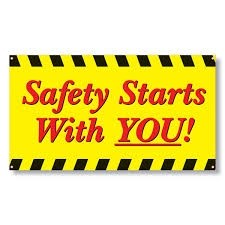Workplace Safety Programs

Implementing a workplace safety program reduces work-related accidents, injuries and illnesses. The program identifies and controls risks through employee involvement by implementing policies, procedures and training.
Effectiveness
An effective safety program comes from the top down. Management must believe in the program, emphasize safe practices and set a good example. Employees must help create the program and take ownership for their safety and the safety of co-workers.
Identifying Risks
Risks are identified by looking at your workplace operations. Focus on the connections between the worker, the task, the tools and working conditions, and how they can be improved.
Prevention and Control
After identification, all current and potential hazards must be eliminated or reduced to an acceptable risk level. Job policies and procedures are established. These may include Personal Protective Equipment (PPE), Material Safety Data Sheets (MSDS) and Emergency Preparation.
Training
Typical safety and health training programs include safety orientation training for new workers, hazard recognition, emergency drills, and training required by OSHA standards for your business type.
Review
Review and evaluate your workplace safety program annually for regulatory compliance and needed improvements.
Effectiveness
An effective safety program comes from the top down. Management must believe in the program, emphasize safe practices and set a good example. Employees must help create the program and take ownership for their safety and the safety of co-workers.
Identifying Risks
Risks are identified by looking at your workplace operations. Focus on the connections between the worker, the task, the tools and working conditions, and how they can be improved.
Prevention and Control
After identification, all current and potential hazards must be eliminated or reduced to an acceptable risk level. Job policies and procedures are established. These may include Personal Protective Equipment (PPE), Material Safety Data Sheets (MSDS) and Emergency Preparation.
Training
Typical safety and health training programs include safety orientation training for new workers, hazard recognition, emergency drills, and training required by OSHA standards for your business type.
Review
Review and evaluate your workplace safety program annually for regulatory compliance and needed improvements.
- cfe5a56fce53dc1fd7d2dca6afe17ddaf7.jpg